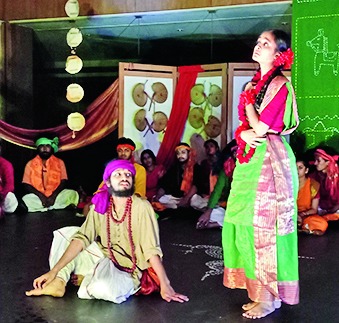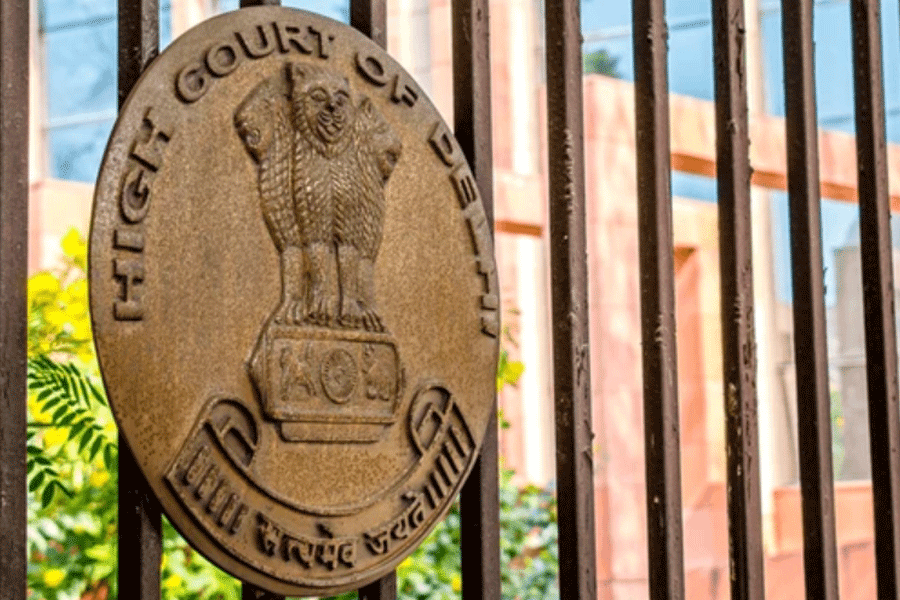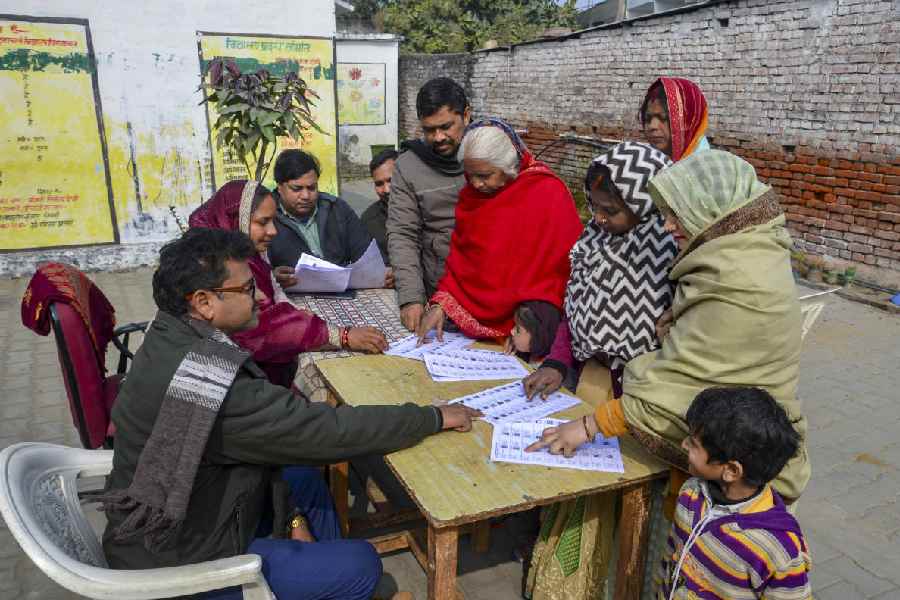
Kasba Arghya's decision to perform Kanka O Leela, a Mymensingh geetika ballad, in ICCR signifies Bengali theatre's growing interest in discovering unconventional performance spaces. The space - a combination of Schechnerian 'found' and 'transformed' (with collapsible wooden partitions and swathes of coloured cloth to resemble a shamiana) - offered interesting possibilities vis-à-vis acoustics, lighting and positioning of audience that remained somewhat partially explored. For example, the sense of distance was created just once, using an area beyond the designated performance space (the ringing cry of Kanka searching for Leela); the light design effectively segregated zones of performance and reception; the seating of the audience was regulated and not left amorphous.
Arghya is known for its bias towards a decidedly Indian mode of performance that does not consider music, singing, dancing and acting as discrete performance categories, and this production is no exception. With the ballad performed with its structure and content virtually unaltered, it was fascinating to encounter meta-theatrical elements (especially, but not exclusively, in the epilogue) along with that of intimate theatre in a Bengali performance-text from the middle ages. The narrative is breathtakingly modern too, with Kanka's fluid and uncertain caste and communal identities compelling one to critically consider the malevolently rampant politics of solidification of such identities in today's India.
It is heartening that the seniors had stepped back to essay supporting roles with relatively young actors taking centre stage. They sang, danced and acted with practised fluency, conveying their enjoyment of performance to the audience. While Raju Bera and Tapas Chatterjee performed seemingly effortlessly, Sayak Mukherjee, in a major role, was at times stiff and self-conscious. Nilanjan Mishra and Samyabrata Mukherjee sang with remarkable feeling and expressiveness, qualities crucial to theatre music. Sima Ghosh's brilliance shone in the one opportunity she had to move from singing circle to mid-stage. However, Kanka O Leela, the directorial debut (under Manish Mitra's supervision) of Mary Acharya, belongs to her, in which she also performs with great aplomb. As director, Mary can consider injecting more performance elements in certain sequences that have been left rather lopsidedly music-dependent.
There was something movingly vital about the performance that had strangers weeping and laughing together, holding hands. The prime measure of Kanka O Leela's success has to be it being able to form such enchanting bonds of community.










